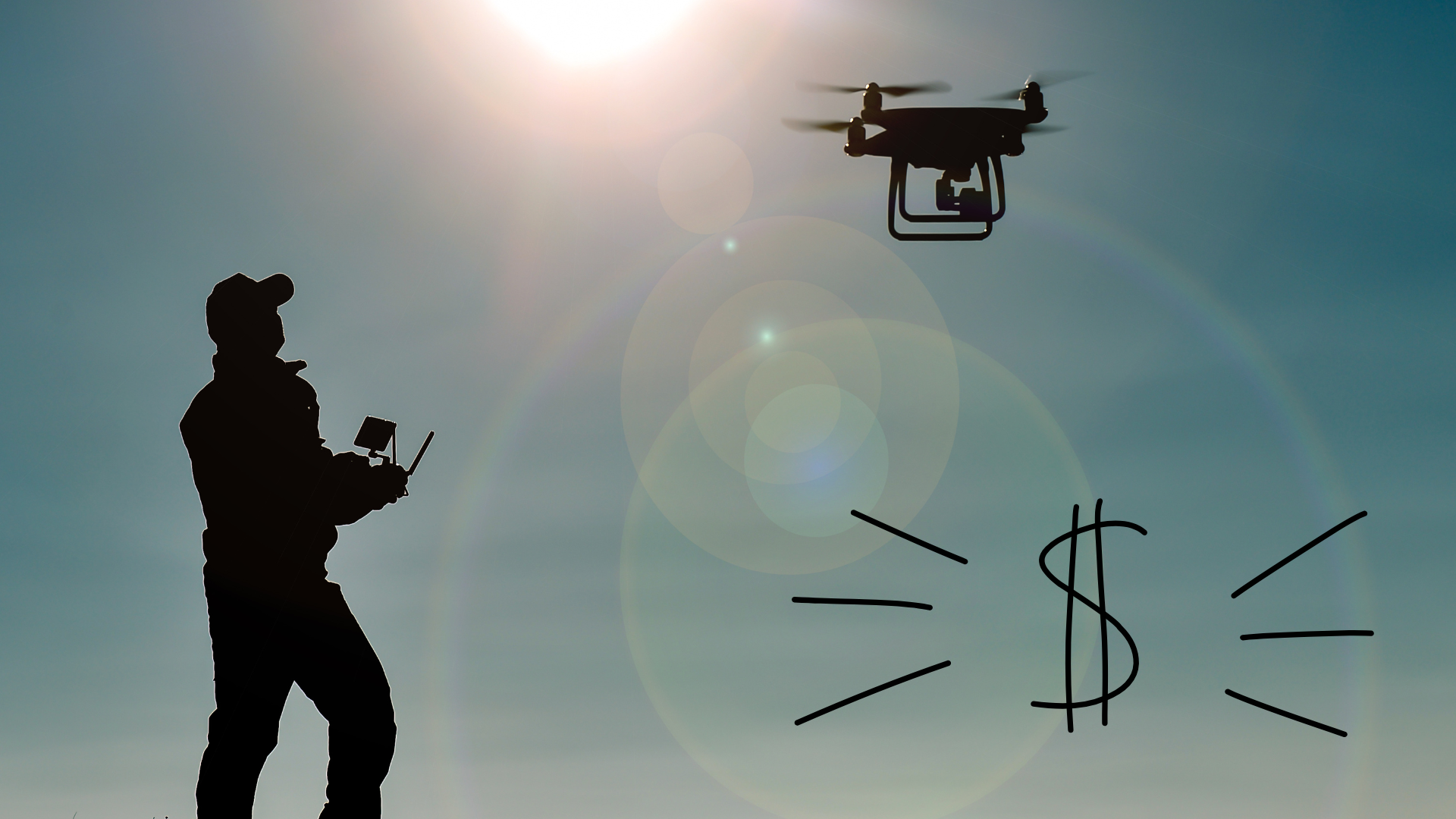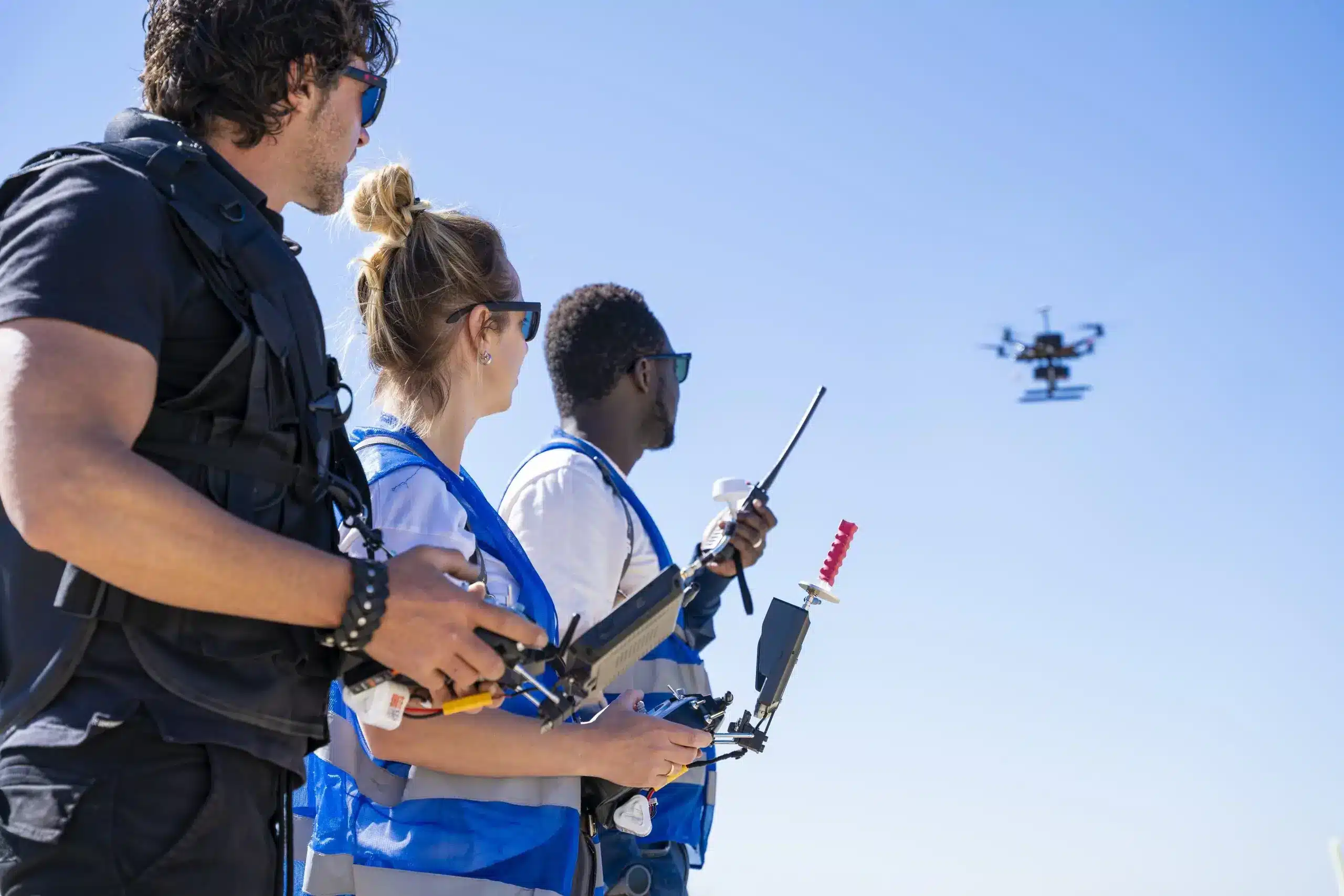Did you know that there are many types of drones? Whether it is because of the characteristics of their motorisation and arms, or because of the aspects of use thbecoming a professional pilot, it is important that you know what types of drones exist and what they are used for, so that you can get the most out of your unmanned aircraft.
at are covered by the regulations in force, there are many different types of drones today.
If you are interested in In this article we will give you information on the types of drones according to their use, structure and number of propellers, as well as information on the categories of drones established in the European regulations governing all aerial activity related to unmanned aerial vehicles or UAS. This way, you will have the possibility to quickly identify the types of drones and their use.
But before continuing, if you want to train as a professional and access a job market with many opportunities and great salaries, we recommend you to take a look at our drone pilot course.
Índice de contenidos
ToggleTypes of drones according to their structure
Firstly, drones are classified according to their structure or shape, and two basic distinctions can be made:
- Fixed-wing
- Rotary-wing
Fixed-wing drones
Fixed-wing drones are those that use aerodynamics for lift. They are similar in composition to aeroplanes, with an elongated body and wings, which emerge from the central main body, generating the lift force in the air.
The advantages of fixed-wing drones are that they are typically more energy efficient than rotary-wing drones, making them ideal for long-range and long duration flights.
Among their main uses, this category of drones is used for photogrammetry, precision agriculture and surveillance, among others. They are capable of covering large areas in a single flight and can be equipped with special cameras and sensors to collect data and generate high-resolution 3D maps and models.
Rotary wing drones
Among the types of UAVs, rotary wing drones or multi-rotors stand out. They are the most common in the current market due to their versatility, which achieve their lift by means of propellers driven by motors located on each of their arms.
This type of drones are quite stable, so they are widely used for all kinds of activities. From light shows with drones, surveillance systems, security and emergency interventions, or even aerial recordings for film and television.
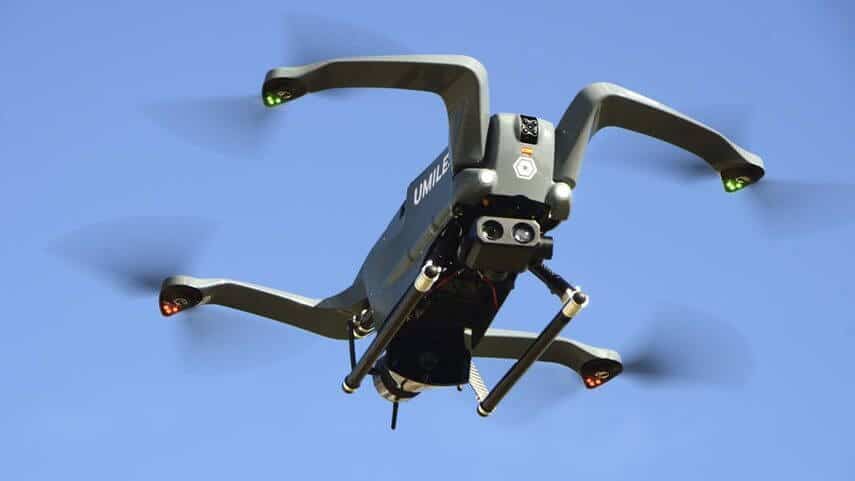
Thanks to the characteristics of rotary wing drones, it is possible for these UAVs to stay in the air flying over the same point, and they have the ability to rise and land vertically, so they can be used in confined spaces if they have the right handling control.
These in turn are subdivided into different classes of drones, depending on the number of propellers or arms they have.
Types of drones by number of propellers or arms
One of the ways to identify the different types of drones that exist is according to the number of motors or arms that make up the drone. This is the most commonly used classification of drones, as it uses the appearance of the drone to differentiate between them, so it is easy to identify them.
They can be different sizes and have different functions, but their main characteristic is the number of arms they have and therefore the number of propellers. In this classification we can find 5 types of drones:
- Tricopters
- Quadcopters
- Hexacopters
- Octocopters
- Coaxial
Tricopters
As the name suggests, this type of tricopter drone has 3 arms. In this case, each of the front arms has a motor that rotates in opposite directions to generate power. The rear motor acts as a servomotor to provide stability in flight.
Quadcopters
This is probably the most common type of drone on the market. It is an aerial vehicle with four arms, each of which has a motor. Thanks to their equidistant configuration they offer great stability.
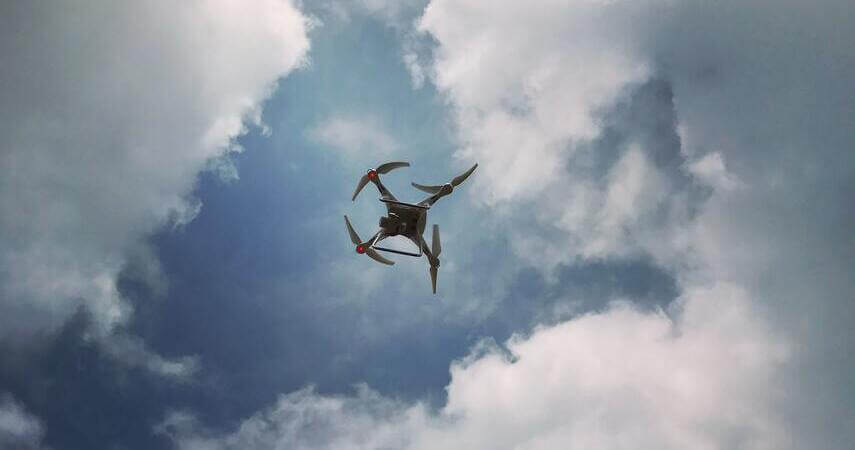
Hexacopters
Hexacopters are drones with 6 arms and 6 engines. These are the most used in the professional field to achieve high quality aerial shots, thanks to their excellent stability, which allows cameras to be installed and professional level recordings to be made.
Another advantage of this type of drone is that they offer greater safety, since in case of failure of any of the engines, it is possible to land the drone without major problems only with the propulsion of the other engines.
Octocopters
As the name suggests, these drones have 8 arms and 8 motors. Their stabilisation capacity is even greater than that offered by haxacopters, however, they have the disadvantage that they are larger and heavier because they have more components. This is why they can be difficult to control in small spaces.
Coaxials
Another type of drones that can be found on the market are coaxial drones, which are drones that each have 2 motors. Thanks to this feature they are much more powerful, so they can transport objects or rise to great heights more easily.
They are also widely used in the professional field, to take high quality aerial shots or to perform specific tasks that require the movement of objects. Without a doubt, the coaxial drone is one of the most versatile drones.
Drones categories by control method
Did you know that there are different ways to control a drone? Depending on how it is piloted, it can belong to one category or another. Let’s see which ones exist.
Autonomous drone
These are drones that do not need to have a pilot operating in real time to control the aircraft’s movements. That is to say, this type of drone moves autonomously according to a previous programming that guides it through the sites to be covered. It is widely used in agricultural drones.
Dron operated by remote control
As you can imagine, this kind of drone flies remotely controlled by a pilot. It is the most common type of drone and can be controlled by a remote control with a camera, or through FPV goggles that transmit images in real time and in first person to the pilot.
Classification according to AESA drone regulations
Another way in which drones are classified is based on current regulations. According to the current regulations issued by EASA (European Aviation Safety Agency), there are 6 classes of drones that are classified according to their maximum take-off mass or MTOW; but there are also a series of characteristics that the drone must meet in order to be considered within each category.
Among the drone categories set out in Regulations (EU) 2019/947 and (EU) 2019/945, classes ranging from C0 to C6 are listed. The last two classes have been incorporated in the Delegated Regulation (EU) 2020/1058 p, where these 2 have been included and will be the classes used in the European standard scenarios.
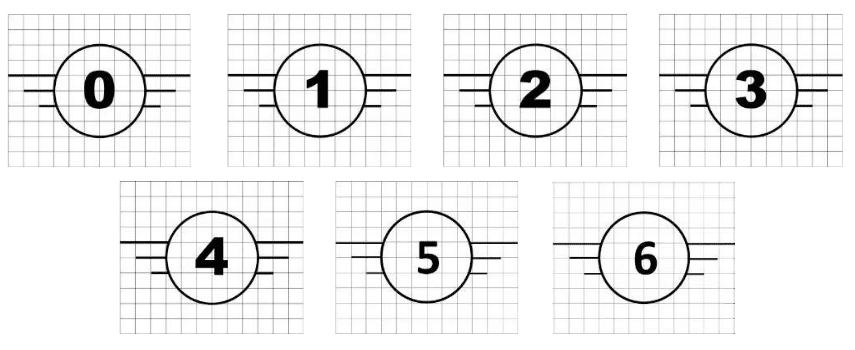
The requirements for each class of drones are listed below.
Class C0
The types of dC0 must comply with the following requirements:
- Their maximum take-off weight or mass (MTOW) may not exceed 250g.
- The flight speed must not exceed 19m/s.
- They must be designed to avoid injury to persons and must be safely controllable.
- They must be marketed with the manufacturer’s instructions for use.
Class C1
Drones falling into category C1 must comply with the following specifications:
- Their weight or MTOW must be less than 900g, but greater than 250gr.
- Their impact energy may not exceed 80 joules.
- Their flight speed must not exceed 19 metres per second.
- They must have a geo-awareness system.
- They must be equipped with a safe recovery system in case of signal disconnection or loss.
- They must be equipped with remote identification.
- They must be marked with a unique physical serial number.
- They must be equipped with lights so that they can be seen at night.
- Their design must be developed in such a way as to avoid causing harm to persons.
- They must be capable of being safely controlled.
- They must be placed on the market with the manufacturer’s instructions for use.
Class C2
The drone regulations state that drones that fall into category C2 must have the following characteristics:
- Their weight or MTOW must not exceed 4 kg.
- They must be equipped with a low speed function, with a limit of less than 3 m/s.
- They must be equipped with a geo-awareness system.
- They must be marked on their structure with a physical and unique serial number.
- They must have a remote identification system.
- They must have a data link protected against interference.
- They must have a safety system to terminate the flight and recover the drone in case of loss or disconnection.
- They must be equipped with a lighting system for night visibility.
- Their design must be developed to avoid causing harm to people.
- They must be safe to operate.
- The manufacturer’s instruction manual must be included for their commercialisation.
Clase C3
Category C3 includes all drones that comply with the following characteristics:
- Their weight or MTOW must not exceed 25 kg.
- Its longest dimension must not exceed 3 metres in length.
- It must have a geo-awareness system.
- It must have a data link protected against interference.
- It must have a flight termination or connection recovery system in case of loss.
- It must have remote identification.
- It must be equipped with lights for night identification.
- It must have the unique physical serial number marked on its structure.
- It must be securely controllable.
- It must be marketed with the manufacturer’s instruction manual.
Clase C4
This class includes drones that comply with the following characteristics:
- Its weight is less than 25 kg.
- It must be safely controllable.
- It must not have an automatic flight mode, except for the stabilisation system in the event of loss of connection.
- It must be marketed with the manufacturer’s instruction manual.
Clase C5
In the case of class C5 the following aspects must be considered:
- Their weight or MTOW must be less than 25kg.
- It must not be a fixed-wing drone, unless it is a captive aircraft.
- It must provide clear flight altitude information.
- They must have a low speed system, the limit of which does not exceed 5m/s.
- Must have a link recovery or flight termination system in case of stall.
- It must have a safe landing system in case of link disconnection.
- It is required to have a data link protected against interference.
- It must have a unique serial number on its surface.
- It must have a remote identification system.
- It must have a geo-awareness system.
- It must have a control station and low battery warning system.
- It must have a control light system for night flights.
- In case the drone has a flight limitation system, it must have a system to notify the pilot of this impediment.
Clase C6
In the last class referred to as C6 the following aspects must be taken into consideration:
- Its weight or MTOW must not exceed 25 kg.
- It must have a clear information system on the flight altitude data, which prevents the drone from exceeding the limits.
- The maximum horizontal speed allowed shall be 50 m/s in relation to the ground.
- It must have a system for recovery and safe landing in case the link to the controller is lost.
- It must have a secured data link to prevent unauthorised access.
- It must have a unique identification number marked on its surface.
- It must have a remote identification system.
- It must also have geo-awareness system.
- A low battery notification system is required.
- If it incorporates a flight limitation system, it must have a system for notifying the pilot of such limitation.
- It must have a control light system for night flights.
Drone identification labels
According to the new drone regulations, from 1 January 2024 all models must be marked with a CE label from the factory identifying the class in which the UAS falls.
Unmarked models will have to prove that they were manufacturated prior to this date and will have to fit into the category to which they belong according to their characteristics:
By the same date, all drones manufactured must include in their marketing box a standardised information note indicating the operations that are permitted and prohibited for that type of drone.
What types of drones do not need a licence?
Now that you know what types of drones there are, it is important to take into account the regulatory aspects governing the flight of these unmanned aircraft.
At the moment, class C0 drones weighing less than 250g do not require any kind of licence for use. However, the pilot is required to be familiar with the manufacturer’s operating instructions depending on the type of drone and its functions.
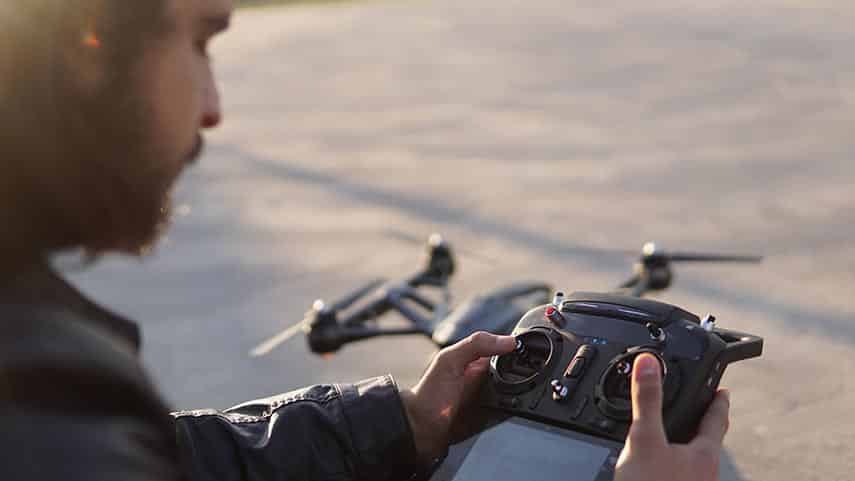
However, from the entry into force of the new legislation in January 2024, all pilots owning drones with MTOW of less than 250 grams will have to take an online course and pass the minimum class test set by EASA, depending on the subcategory to which the drone belongs. This allows the pilot to be familiar with the parts of a drone and its functions in order to avoid misuse.
What are the uses of drones?
Drones can also be classified according to their intended use. These unmanned vehicles can be used for recreational, commercial, service or security purposes. Therefore, depending on the types of drones and their characteristics, the most common uses may be the following:
- Drones for private use, which can be used as entertainment items for young people and adults. They are also frequently used for commercial purposes, for high-altitude landscape shots, event recordings, commercials…
- They are also widely used in journalism to record events on location.
- In the geographical field, they are useful to take aerial shots of terrains and spaces with different characteristics, which is why they have been implemented in the area of topography to take measurements from heights of the planimetry and altimetry of places. At UMILES University we have a course on photogrammetry with drones to show the potential of these aircraft in this field.
- Drones are also used for security tasks, such as the Saturno surveillance drone.
- In the field of agronomy, they are frequently used for crop care, thus minimising labour intervention in the fields thanks to spraying with drones. We teach how to operate them and exploit their full potential in this field in our course on precision agriculture with drones.
- In some places drones are used to deliver goods, although regulations for this type of activity are quite stringent.
As the benefits offered by these types of unmanned vehicles are discovered, more and more uses and applications are being given to them, making them an increasingly attractive alternative for all types of businesses and activities. Did you know all the types of drones that exist?

